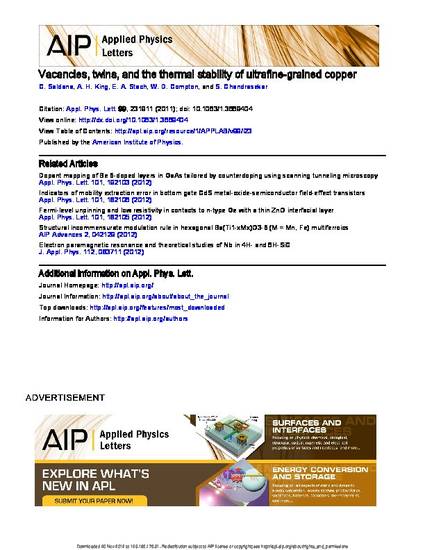
Article
Vacancies, twins, and the thermal stability of ultrafine-grained copper
Applied Physics Letters
Document Type
Article
Disciplines
Publication Date
1-1-2011
DOI
10.1063/1.3669404
Abstract
Ultrafine-grained metals have impressive strength but lack the thermal stability necessary for most applications. Nano-scale, deformation twinned copper microstructures exhibit a rare combination of strength and stability. While storing less energy in their interfaces than other nanostructured metals, they also exhibit lower vacancy supersaturations, reducing the driving force and mobility for microstructure evolution. From a thermal stability perspective, the nano-twinned microstructure may thus be preferred over the more commonly produced nano-scale equiaxed microstructures.
Rights
Copyright 2011 American Institute of Physics. This article may be downloaded for personal use only. Any other use requires prior permission of the author and the American Institute of Physics.
Copyright Owner
American Institute of Physics
Copyright Date
2011
Language
en
File Format
application/pdf
Citation Information
C. Saldana, Alexander H. King, E. A. Stach, W. D. Compton, et al.. "Vacancies, twins, and the thermal stability of ultrafine-grained copper" Applied Physics Letters Vol. 99 Iss. 23 (2011) p. 231911 Available at: http://works.bepress.com/alex_king/3/

This article appeared in Applied Physics Letters, 99, no. 23 (2011): 231911 and may be found at http://dx.doi.org/10.1063/1.3669404.